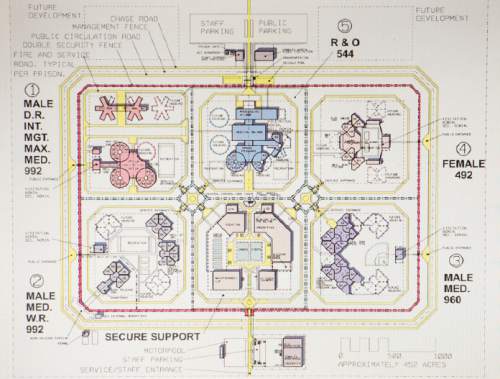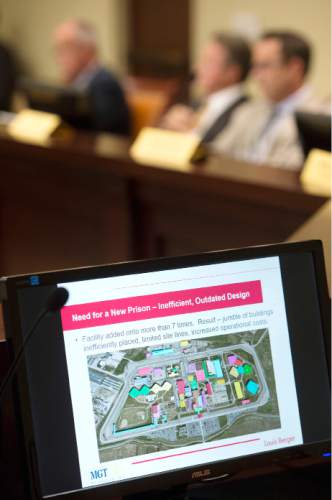This is an archived article that was published on sltrib.com in 2015, and information in the article may be outdated. It is provided only for personal research purposes and may not be reprinted.
It will take between four and six years before a new Utah State Prison is ready to house inmates, according to state building experts who will oversee the massive construction project. The variation in time depends on the type of construction process the state decides to use.
But before that can get underway, the state has to decide which 500-acre plot it wants to buy between the Great Salt Lake and Salt Lake City International Airport. That process may take up to a year.
The newly formed Prison Development Commission heard this timeline during its first meeting Tuesday. The commission comprises largely the same state lawmakers who recommended moving the prison from Draper to western Salt Lake City, with the addition of former Salt Lake City Councilman Carlton Christensen.
This group will play an advisory role, assisting the state's Division of Facilities Construction and Management (DFCM), which is responsible for hiring the architects and construction teams.
"My goal — and, I believe, the goal of most of the commission and most of the Legislature — is to do this as quick as possible," said Rep. Brad Wilson, R-Kaysville, who is the commission's co-chairman. "That facility in Draper — every day we have people down there is a missed opportunity for the state."
But the state will have to balance its desire to build a prison fast with its goal to build a prison that will last 100 years and help foster treatment for people who have mental illness or drug addictions.
Consultants hired by the state as it determined where to move the prison estimated that it would take three years to build a 30-building complex that will house up to 4,000 inmates. The estimated price tag was $550 million.
It appears that it will take more time to build the prison, and that it may cost more as well. Wilson said he hopes to have more firm numbers during the upcoming legislative session, which begins in January.
Jim Russell, an assistant director at DFCM who will oversee the project, offered the state three construction styles. He favored a plan in which the state would hire a construction manager who would also act as the general contractor.
This person would lead the overall project, but could parcel out smaller pieces to other architects and construction teams. He said it may cost more initially. He estimated it would take four years and three months to finish, meaning the prison wouldn't be completed until the end of 2019 if it started this month.
The other option seriously considered was a "design-build" option, similar to the way big freeway projects have been completed, in which the same team is responsible to design and build the entire project.
It would take about four years.
Russell said that would limit cost, but that it would also limit flexibility and could end up as a prison that is not constructed to as high a standard as his preferred option.
The commission heard from two companies that want a piece of this project. Mike Sibbett, a former chairman of the Board of Pardons, who now represents Point West Ventures, argued on behalf of a design-build option.
A third option, which didn't appear to have much support, was called the "design-bid-build" option.
In that plan, a firm would do the entire design phase before construction would begin. While the most direct, it also takes the longest time, estimated at nearly six years.
Sahara Construction, led by Clegg Mabey, suggested hiring a sort of super-consultant who would help the state manage the project from beginning to end. Sahara has built county jails in Utah.
The commission decided to punt that decision, giving its members with less building experience time to study the options.
In the meantime, Russell's team will continue to work with the owners of the prison land, namely Rio Tinto and a family in California that runs a vineyard, on agreements to further study the wetlands and soil in the area.
Until those agreements are in place, his team can't go to the site to determine what it will take to build on this soft land.
Twitter: @mattcanham





